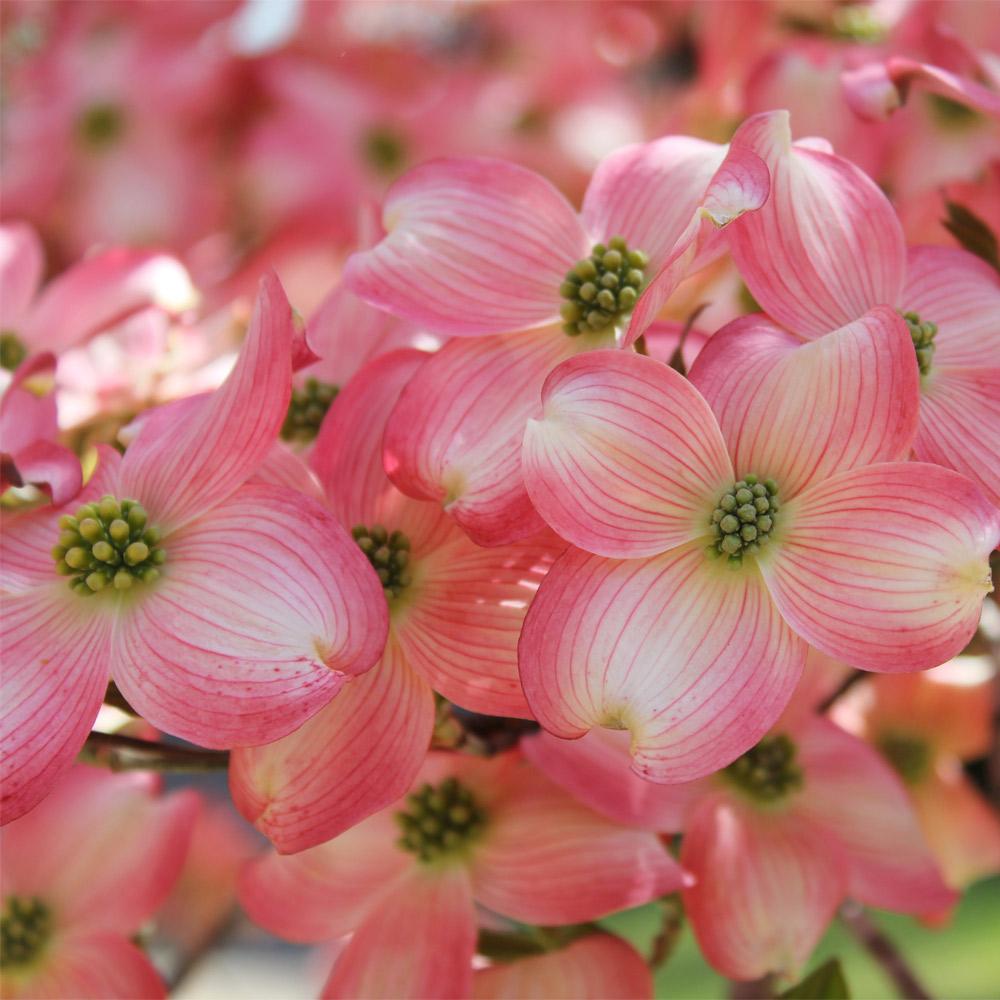
The larger the area covered by mulch the better. There is no need to amend the backfill if the soil is well drained.īoth newly planted dogwoods and older established trees should be well mulched with pine needles, pine or cypress bark or other material. Compacted soil should be loosened with a tiller in a 5 or 6 foot diameter to speed root growth into surrounding soil. When planting dogwoods, dig the hole no deeper than the root ball and about twice the diameter of the ball.

The abundance of blooms is related to the amount of sun received.
#Cherokee brave dogwood 6 ft full
Although they seem to grow best in a partially shaded location, many can be found in full sun, provided the soil conditions and moisture are just right. According to the Texas Forest Service – Texas Big Tree Registry, the Texas Champion Flowering Dogwood is located in Rusk County, measuring at 75 feet in circumference, 38 feet tall, with a 32 foot crown spread.ĭogwoods do best in a well-drained, slightly acid, sandy loam soil which is why they do well in East Texas. They can get up to 40 feet tall, and some specimens have been recorded to be over 150 years old, although they typically have a much shorter lifespan in our area. In the winter, the scaly bark of the trunk is unmistakable, looking similar to alligator skin.ĭogwoods are typically found as understory trees. In the fall, green leaves turn a colorful orange-red, which highlights clusters of bright scarlet fruit which birds relish. The manner in which the branches grow horizontally provides the landscape with a unique dimension. The tiny, true flowers are clustered in the center of the white bracts.ĭogwoods are valued not only for their spring bloom, but also for their year-round interest. What are often referred to as the flowers on a dogwood are actually modified leaves called bracts. A few of the more popular ones include ‘Cherokee Chief’ with ruby red flowers, ‘Cherokee Sunset’, a red variety with variegated leaves of pink, green and white, ‘Cherokee Daybreak’, a white selection with variegated leaves, ‘Cherokee Princes’, ‘Cloud 9’ and many, many others. Many outstanding varieties have been developed over the years (well over 100). From that one branch most of the pink and red varieties have descended. In the late 1800’s, a white dogwood was found in Philadelphia with a single branch bearing pink flowers. Somehow, the unflattering name stuck.ĭogwoods have been cultivated for landscape use since the 1700’s. The common name “dogwood” comes from England where a concoction was made out of the bark a related species to wash mangy dogs. The species name “florida” does not refer to the State but rather an abundance of bloom, which describes dogwoods well. Nowadays, dogwoods are prized for the outstanding display of white or pink bloom in early spring when the azaleas and wisteria bloom. Years ago the hard wood of dogwoods was valued for use in golf clubs, pulleys, engraving blocks and tool handles.

The genus name “Cornus” means horn and refers to the very hard wood of the tree. There are several other species in the dogwood genus Cornus, but none is as widely adapted and grown in the south as the flowering dogwood. Flowering Dogwood, botanically known as Cornus florida, is native to the United States from southern Maine south to Florida, west to eastern Texas and Kansas. We live close to the western limit of where the common flowering dogwood naturally grows. Dogwoods are highly regarded for their all-season interest and especially for their spectacular spring bloom. The sight of dogwoods in full bloom, highlighted against the darker backdrop of a wooded lot is one that is not easily forgotten. Dogwood flowers and Japanese maple new growth make nice contrast


 0 kommentar(er)
0 kommentar(er)
